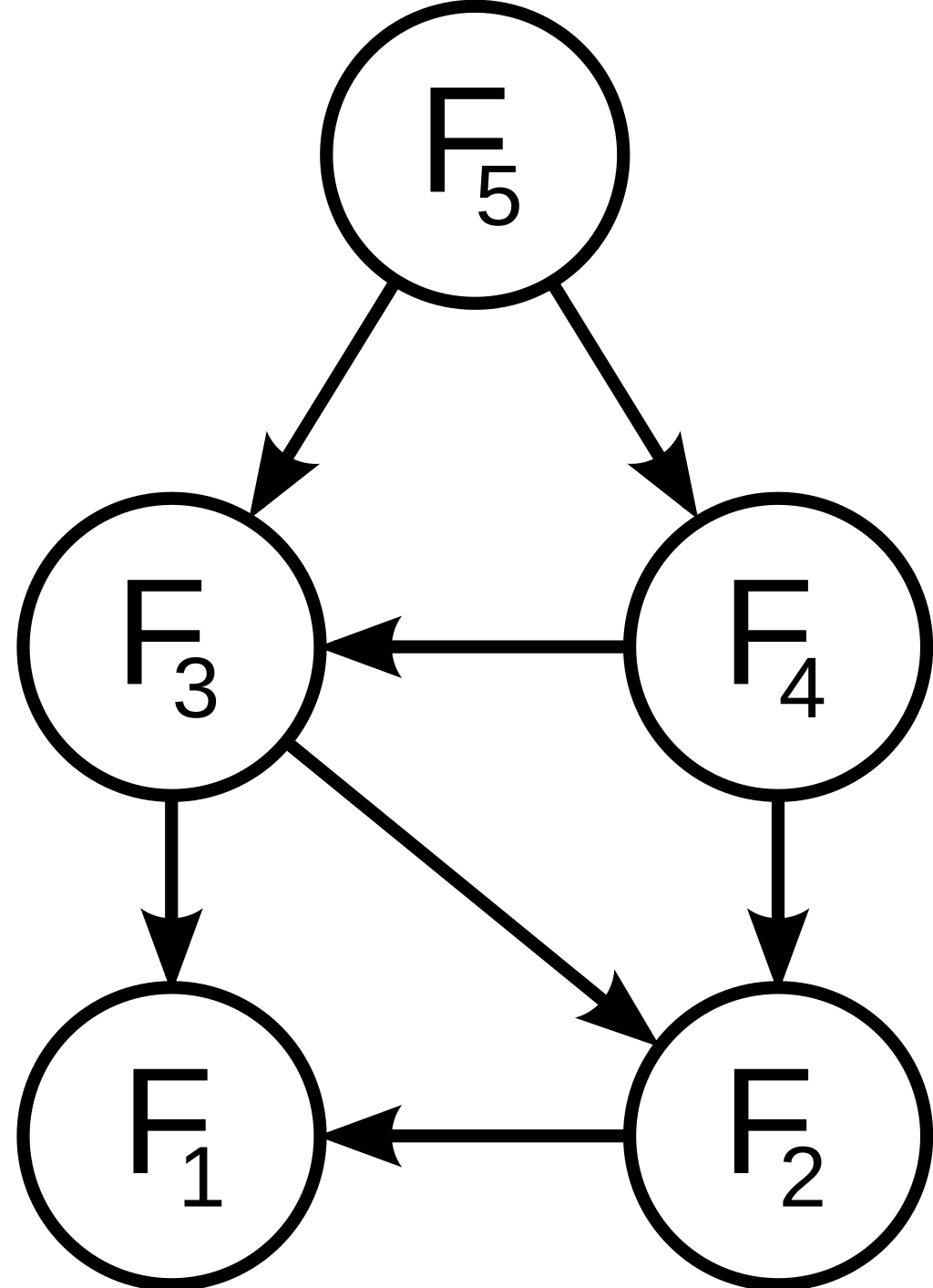AlgorithmsCodingPDEsStochasticProcessesOptimization Fundamentally, dynamic programming is an algorithmic design paradigm that builds upon recursion by storing the results of previously solved subproblems, called memoization. A problem can be solved by dynamic programming if it’s subproblems exhibit the following properties:
- Repeated subproblems: the problem is solved by reusing solutions of subproblems multiple times
- Optimal substructure: an optimal solution can be constructed from optimal solutions of subproblems
Equivalently, these criteria can be defined in terms of a computation DAG (no infinite loops)
- Repeated subproblems:
is not a tree - Optimal substructure: the optimal solution can be computed by combining solutions at each
solved in reverse topological order
An example is computing the 
The two approaches to reusing solutions of subproblems are
- Top-down (Recursive DFS + memoization): One first checks whether the solution to a subproblem has been computed and then either utilizes or computes it (as needed) and memoizes it in a table
global mem = [-1]*(n+1)
mem[0], mem[1], 0, 1
def fib(n):
if mem[n] == -1:
mem[n] = fib(n-1) + fib(n-2)
return mem[n]
- Bottom-up (Iterative DFS + memoization): First solve the subproblems and use those solutions to build to solution to bigger subproblems
global mem = [-1]*(n+1)
mem[0], mem[1], 0, 1
def fib(n):
for i in range(2,n+1):
mem[i] = mem[i-1] + mem[i-2]
return mem[n]
If you can work your way backwards to